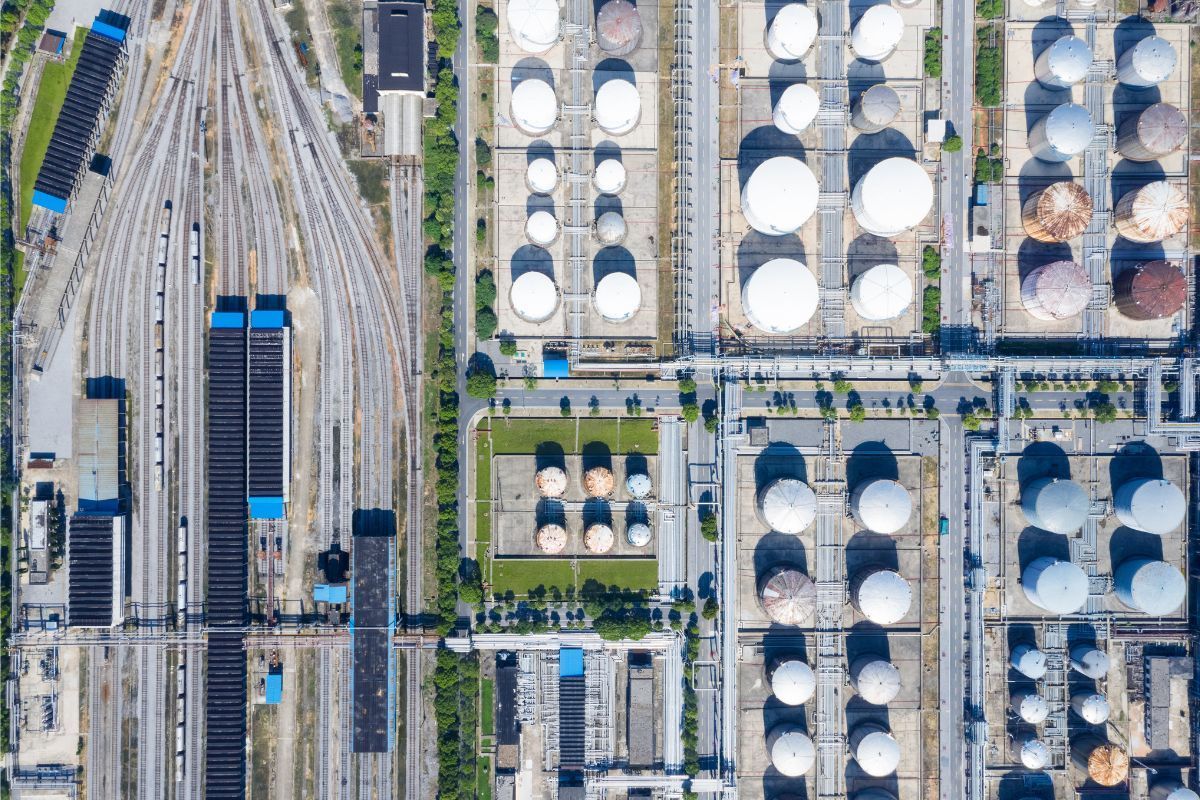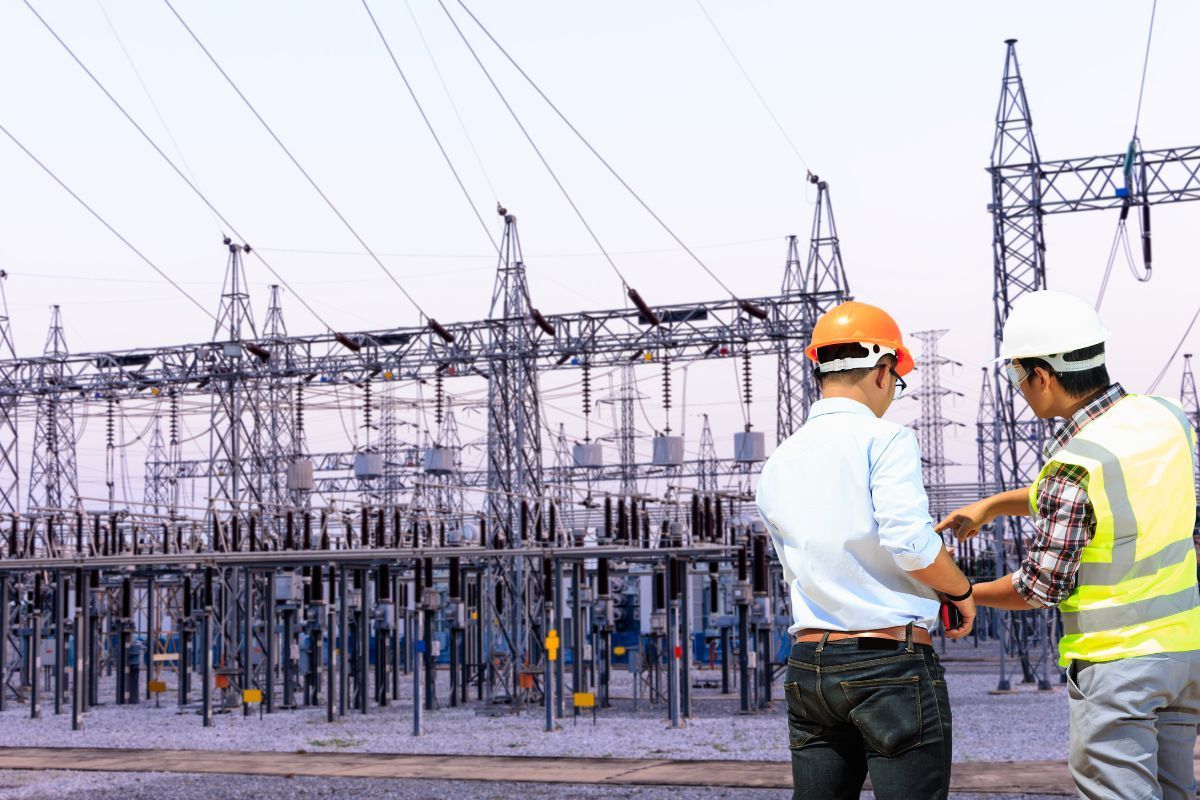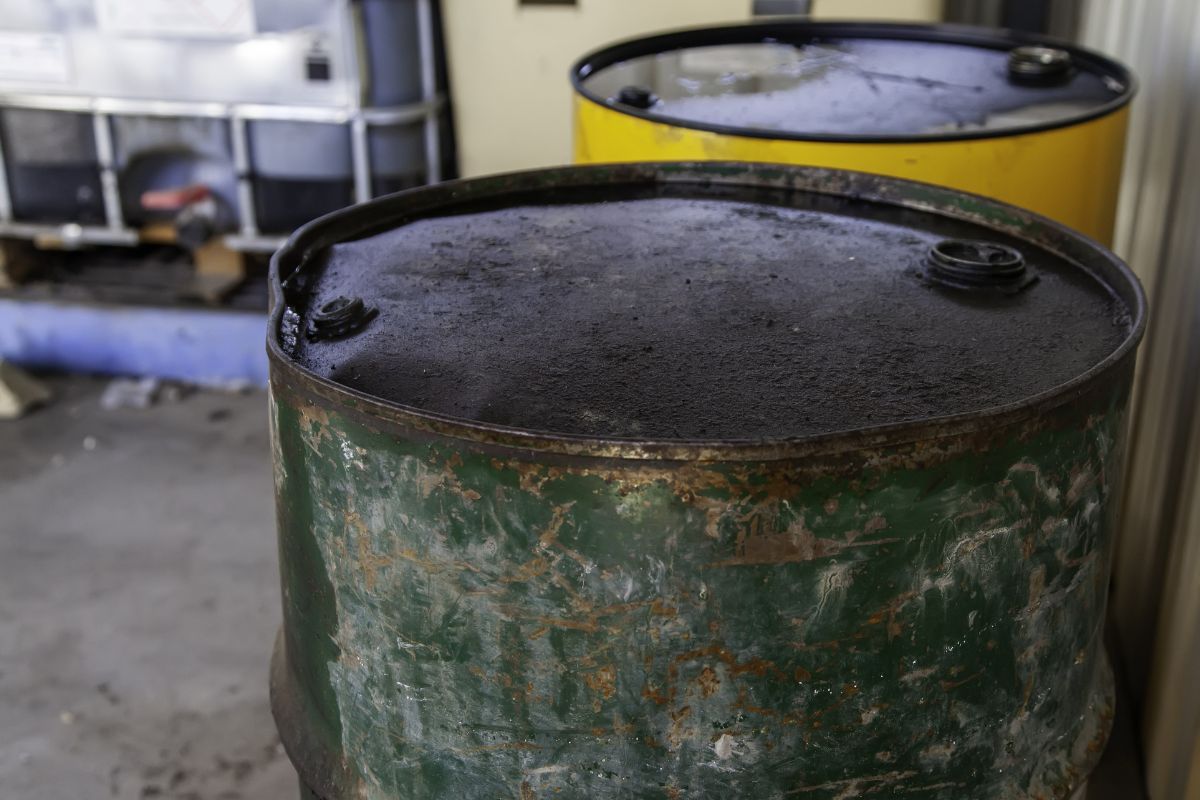Common Insurance Gaps That Leave Drilling Contractors Exposed
See How We're Different
Or Call Us: (281) 823-8262

In the high-risk world of drilling operations, insurance coverage is a critical safeguard for contractors. Yet, many drilling contractors find themselves vulnerable due to gaps in their insurance policies. These gaps can lead to significant financial exposure, project delays, and even legal complications. Understanding the common pitfalls in insurance coverage is essential for contractors aiming to protect their businesses effectively.
Recent industry data highlights the urgency of addressing these vulnerabilities. For instance, a 2024 survey by the Associated General Contractors of America revealed that 70% of contractors have seen an increase in subcontractor defaults, with half of those cases resulting in project delays or cancellations. Such disruptions underscore the importance of comprehensive insurance coverage that extends beyond standard policies. Burns & Wilcox provides valuable insights into how misconceptions about insurance can leave contractors exposed.
Misconceptions About Commercial General Liability Insurance
One of the most pervasive issues drilling contractors face is the assumption that their Commercial General Liability (CGL) insurance covers all potential risks. Jason Travis, Broker of Professional Liability at Burns & Wilcox, emphasizes that this is a common misconception. Many contractors believe their CGL policies are all-encompassing, but in reality, these policies often exclude critical exposures specific to drilling operations.
For example, CGL insurance typically covers third-party bodily injury and property damage but may not cover losses related to subcontractor defaults or certain professional liabilities. This gap can leave contractors responsible for significant out-of-pocket expenses if a subcontractor fails to perform or causes damage. Understanding the limitations of CGL policies is the first step toward identifying necessary supplemental coverage.
Moreover, liability policies purchased to meet contract requirements might not provide the depth of coverage contractors assume. Industry expert Hausman notes that contractors often do not fully understand their policy limits, which can result in unexpected gaps when claims arise. This lack of clarity can be costly, especially in the complex environment of drilling projects where risks are multifaceted. Hausman’s insights highlight the importance of thorough policy review and education.
Additionally, many contractors overlook the significance of environmental liability coverage, which is particularly pertinent in the drilling industry. Given the potential for spills, leaks, and other environmental hazards, having a policy that addresses these specific risks is crucial. Environmental incidents can lead to severe regulatory penalties and costly clean-up efforts, which are often not covered under a standard CGL policy. As such, contractors should proactively seek out specialized environmental insurance to safeguard against these unique liabilities.
Furthermore, the evolving landscape of the drilling industry, including advancements in technology and regulatory changes, necessitates a more nuanced understanding of insurance needs. Contractors must stay informed about the latest developments that could impact their operations and, consequently, their insurance requirements. Engaging with insurance professionals who specialize in the drilling sector can provide valuable insights and help tailor coverage to meet the specific challenges faced in this dynamic field. By taking these proactive steps, contractors can better protect their businesses from unforeseen risks and liabilities.
Inflation and Underreported Property Valuations
Another critical insurance gap stems from the impact of inflation on construction and drilling costs. Rising prices for materials, labor, and equipment mean that property valuations reported for insurance purposes may no longer reflect current replacement costs. This underreporting can lead to insufficient coverage, leaving contractors exposed to significant financial losses in the event of damage or loss.
A report from Global Risk Consultants Corp. warns that many companies face insurance coverage gaps because their policies do not keep pace with inflation-driven cost increases. For drilling contractors, this gap is particularly concerning given the high value of specialized equipment and infrastructure involved in their operations.
Regularly updating property valuations and adjusting coverage limits accordingly is essential to avoid underinsurance. Contractors should work closely with insurance brokers and risk consultants to ensure their policies accurately reflect the true replacement costs of their assets. This report offers a detailed look at how inflation challenges insurance adequacy across industries.
Moreover, the volatility of the market can create a ripple effect, impacting not just direct costs but also the overall availability of insurance products tailored to the construction and drilling sectors. Insurers may become more cautious, leading to stricter underwriting criteria and higher premiums. This shift can further complicate the landscape for contractors who are already grappling with fluctuating costs and the need for adequate coverage. As a result, proactive risk management strategies become paramount, enabling contractors to navigate these challenges effectively.
Additionally, the implications of underreported property valuations extend beyond immediate financial risks. They can affect a contractor's ability to secure financing or investment, as lenders often require proof of adequate insurance coverage before approving loans. In an environment where inflation continues to rise, the need for accurate and timely assessments of property value becomes not just a matter of compliance, but a critical factor in maintaining operational viability and competitive advantage in the market.
Workers' Compensation and Lost-Time Injuries
Drilling contractors operate in one of the most hazardous sectors, with a notably high rate of lost-time workers' compensation claims. Research published by the National Library of Medicine identifies drilling contractors as having the highest overall rate of these claims within the oil and gas extraction industry. These injuries not only affect worker safety but also impose substantial financial burdens on contractors.
A case study from drilling operations revealed that a single lost-time injury can cost a contractor approximately $144,000 when considering both direct medical expenses and indirect costs such as lost productivity and administrative overhead. This figure illustrates the critical importance of comprehensive workers' compensation coverage tailored to the unique risks of drilling work.
Despite improvements in safety protocols, the frequency and severity of claims in drilling remain a concern. Contractors must ensure their workers' compensation policies are robust and include provisions for rehabilitation and return-to-work programs to mitigate the long-term impact of injuries. This study provides valuable data on injury rates and their consequences in the drilling sector.
Furthermore, the psychological impact of lost-time injuries cannot be overlooked. Workers who experience injuries may face anxiety and depression, which can hinder their recovery and reintegration into the workforce. Companies are increasingly recognizing the need for mental health support as part of their workers' compensation programs. By fostering a culture that prioritizes mental well-being alongside physical safety, drilling contractors can enhance overall employee morale and productivity, ultimately benefiting their operations.
In addition to mental health considerations, the implementation of advanced technology in drilling operations has shown promise in reducing injury rates. Innovations such as wearable safety devices, real-time monitoring systems, and automated machinery can help identify hazards before they lead to accidents. As the industry evolves, investing in such technologies not only enhances worker safety but can also lead to lower insurance premiums and reduced claims, creating a more sustainable business model for drilling contractors.
Subcontractor Defaults and Coverage Challenges
Subcontractor performance is a critical factor in the success of drilling projects. However, the rising incidence of subcontractor defaults poses a significant risk. According to the 2024 survey by the Associated General Contractors of America, 70% of contractors have experienced an increase in subcontractor defaults, with half reporting project delays or cancellations as a direct result. This trend not only disrupts project timelines but also strains relationships between contractors and clients, as expectations for timely delivery are often compromised. The ripple effect of these defaults can lead to increased costs, as contractors may need to scramble to find replacement subcontractors or invest additional resources to mitigate delays.
Insurance policies often do not fully cover losses stemming from subcontractor failures. This gap can leave the primary contractor financially liable for delays, rework, or damages caused by subcontractors. Ensuring that subcontractors carry adequate insurance and that coverage extends to subcontractor-related risks is vital. Moreover, the complexity of drilling projects often involves multiple layers of subcontracting, making it essential for primary contractors to conduct thorough due diligence. By vetting subcontractors not only for their technical capabilities but also for their financial stability and insurance coverage, contractors can better protect themselves against potential defaults.
Additionally, contractors should consider specialized insurance products designed to address these risks, such as surety bonds or subcontractor default insurance. These tools can provide an extra layer of financial protection and help maintain project continuity. Surety bonds, for example, can ensure that subcontractors fulfill their contractual obligations, offering peace of mind to primary contractors. Similarly, subcontractor default insurance can cover the costs associated with hiring replacement subcontractors or completing unfinished work. More insights into these challenges can be found in the Burns & Wilcox analysis. Furthermore, proactive communication and collaboration with subcontractors can foster a more reliable partnership, enabling contractors to address potential issues before they escalate into defaults.
Insurance Shortfalls in the Energy Sector
The energy sector, which includes drilling contractors, faces significant insurance shortfalls due to the complex and high-risk nature of its operations. A white paper by Willis Towers Watson highlights that energy companies may require up to $50 billion in additional coverage to adequately protect against their exposures. This shortfall is partly due to limitations in current insurance products that do not fully address evolving risks.
For drilling contractors, this means that standard insurance offerings may not cover emerging threats such as environmental liabilities, cyber risks, or catastrophic equipment failures. The dynamic nature of drilling operations demands flexible and comprehensive insurance solutions that can adapt to new challenges. As the sector increasingly incorporates advanced technologies, such as automation and data analytics, the potential for new types of risks also rises, necessitating a reevaluation of existing insurance frameworks.
Contractors should engage with insurers and risk managers to identify gaps in their coverage and explore innovative insurance products tailored to the energy sector's unique needs. This proactive approach can help bridge coverage gaps and improve overall risk resilience. The Willis Towers Watson report offers an in-depth perspective on these insurance challenges.
Moreover, the increasing frequency of extreme weather events and natural disasters, attributed to climate change, further complicates the risk landscape for energy companies. Insurers are grappling with how to price these risks accurately, which can lead to higher premiums or even the withdrawal of coverage for certain high-risk operations. This situation underscores the need for energy companies to not only seek additional coverage but also to invest in risk mitigation strategies that can lessen their exposure to such unpredictable events.
Additionally, regulatory changes aimed at enhancing environmental protections are prompting a shift in how risks are assessed and insured. Energy companies must stay abreast of these changes and adapt their insurance strategies accordingly. By fostering a collaborative relationship with insurers, companies can help shape the development of new products that better address the specific risks they face, ultimately leading to a more resilient energy sector capable of navigating the complexities of today's operational environment.
Declining Claim Frequency but Persistent Risks
While the frequency of lost-time claims in the construction industry, including drilling, has declined significantly—by nearly 26% between 2015 and 2022 according to data from the National Council on Compensation Insurance (NCCI)—the risks remain substantial. This decline reflects improvements in safety practices and risk management, but does not eliminate the need for vigilant insurance coverage.
Contractors must balance optimism about reduced claim frequency with preparedness for high-impact incidents. The financial consequences of even a single major injury or equipment loss can be devastating without adequate insurance. Continuous review and adjustment of insurance policies are necessary to keep pace with operational changes and emerging risks.
Staying informed about industry trends and leveraging expert advice can help contractors maintain effective coverage and avoid costly surprises. The NCCI data underscores the importance of ongoing risk assessment despite positive trends.
Moreover, the construction industry is evolving rapidly, with new technologies and methodologies reshaping how projects are executed. Innovations such as drone surveillance, Building Information Modeling (BIM), and advanced safety gear are becoming commonplace, yet they also introduce new complexities and potential liabilities. Contractors must not only embrace these advancements but also understand the implications they have on their insurance needs. For instance, while drones can enhance site monitoring and safety, they may also require specialized coverage to address risks associated with their operation.
Additionally, the regulatory landscape is constantly changing, with new safety standards and compliance requirements being introduced regularly. This necessitates that contractors remain proactive in their approach to risk management, ensuring that their insurance policies align with current regulations and best practices. Engaging with insurance professionals who specialize in construction can provide invaluable insights, helping contractors navigate these complexities and tailor their coverage to effectively mitigate potential risks. As the industry continues to adapt, a forward-thinking approach to risk and insurance will be essential for long-term success.
Conclusion: Proactive Risk Management Through Insurance Awareness
Drilling contractors operate in a challenging environment where insurance gaps can have serious repercussions. Misunderstandings about coverage, inflation-driven underinsurance, subcontractor defaults, and the high cost of injuries all contribute to vulnerabilities that must be addressed proactively.
By gaining a clear understanding of their insurance policies, regularly updating coverage limits, and seeking specialized insurance products, drilling contractors can significantly reduce their exposure. Partnering with knowledgeable brokers and risk consultants is essential to navigate the complexities of insurance in this sector.
Ultimately, a well-informed and proactive approach to insurance not only protects contractors financially but also supports safer, more reliable project execution in one of the most demanding industries.










